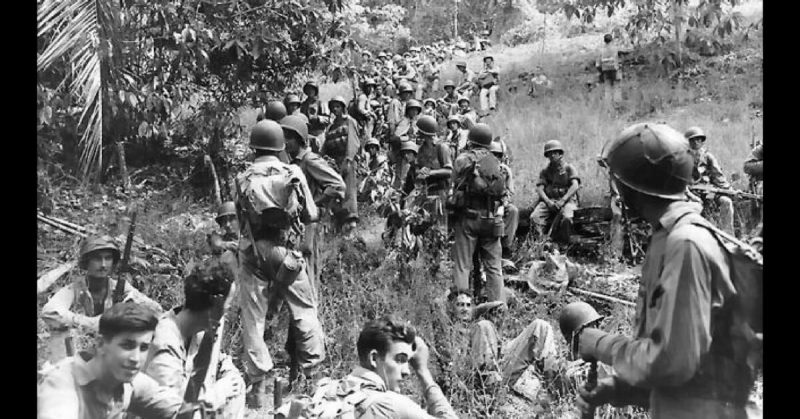Despite being the smallest of America’s Armed Forces, the US Marine Corps are considered the cream of the crop. There is a good reason for this as each member is almost a one man army which many have proven over the years.
One such man was Edward Henry Ahrens who was born on November 4, 1919, in Dayton, Kentucky. After graduating from high school, he got a job with the Wadsworth Watch Case Company.
Life dramatically changed for him when Japan bombed Pearl Harbor in December 1941. It forced America into a war it had tried very hard to avoid. Rather than wait to be conscripted, Ahrens went to Cincinnati, Ohio to join the US Marine Corps on February 3, 1942.
First, he went to South Carolina for boot camp training at the Marine Corps Recruit Depot Parris Island. No doubt impressed that a watch case maker had not only survived their process but had also passed it, he was then sent to the Marine Barracks Quantico in Virginia on March 16, 1942. He did not stay there for long.
Japan did not bomb Pearl Harbor out of any desire to conquer the US. It wanted an empire in the Pacific which meant capturing islands belonging to the US and various European countries.
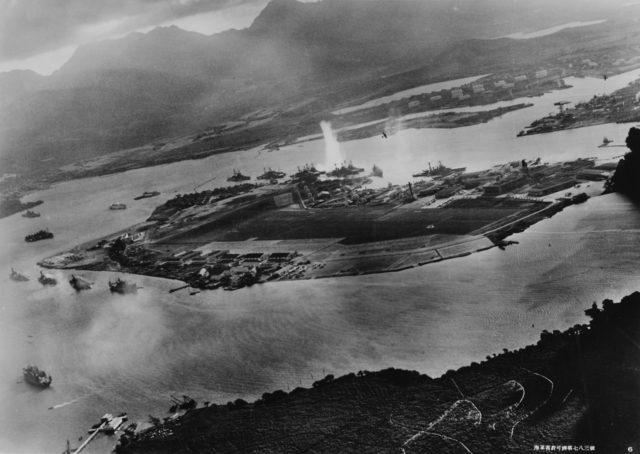
Within hours of destroying the US Pacific Fleet at Pearl Harbor, they attacked the American territories of the Philippines, Guam, and Wake Island. They also invaded the British colonies of Malaya, Singapore, and Hong Kong. By February 1942, they were bombing northern Australia.
As America was not the military superpower it is today, at first it fought a defensive war. As a result, Japan’s victory over the Pacific seemed inevitable. Until Operation Watchtower was launched.
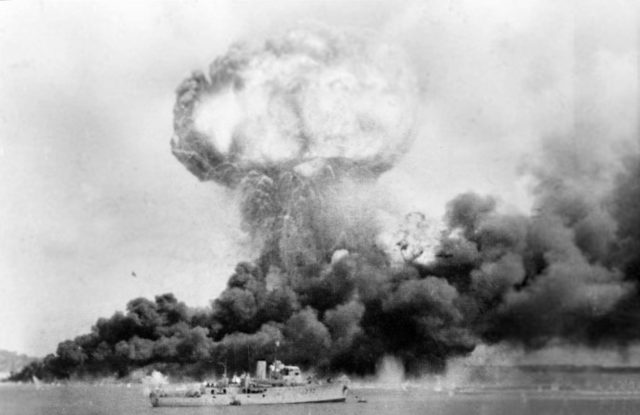
Better known today as the Battle of Guadalcanal (or the Guadalcanal Campaign), its original goal was to take only the island of Tulagi in the British Solomon Islands. Japan had captured it on May 3, 1942, and used it to threaten Allied supply routes and communication lines between the US, Australia, and New Zealand.
By the summer, America’s vast resources and industrial might came into play. On August 7, the US went on the offensive for the first time when it attacked not just Tulagi, but also the islands of Gavutu-Tanambogo, Guadalcanal, and Florida in the southern Solomon Islands. With the support of ships from the Navies of Australia and New Zealand, the US 1st Marine Division landed on the beaches.
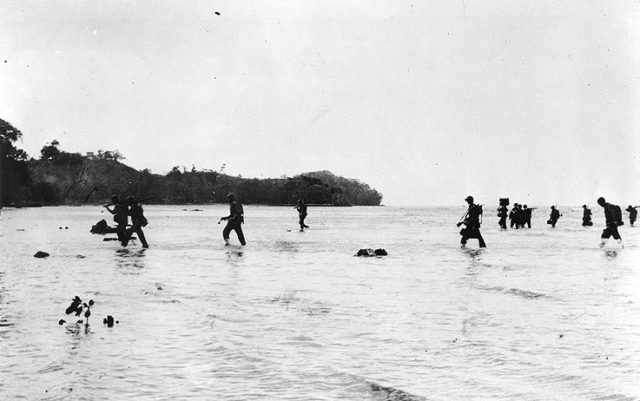
Company C, 1st Raider Battalion had taken and secured the right flank of the beachhead. Ahrens was with Company A, 1st Raider Battalion, Fleet Marine Force aboard the USS Little (APD-4) as part of the second assault team. To their surprise, they met with very little opposition.
The Marines made their way down the right slope of the island’s central ridge. It was terrain they knew well as Tulagi had been British territory until the Japanese had decided otherwise.
Company A’s target was a former British government building which they intended to use as their Raider command post. Being British, of course, it had a cricket field overlooking a ridge. Private First Class Ahrens’ job was to defend it. His team fanned out and prepared its defenses.
The Japanese launched their counter attack later that evening. They tried to drive a wedge between the two companies, forcing C company to stay where it was while they focused their main attack on Ahren’s group. Their goal was to make their way up the ridge, sweep through the cricket grounds, and take the new Raider command post. Or so they hoped.
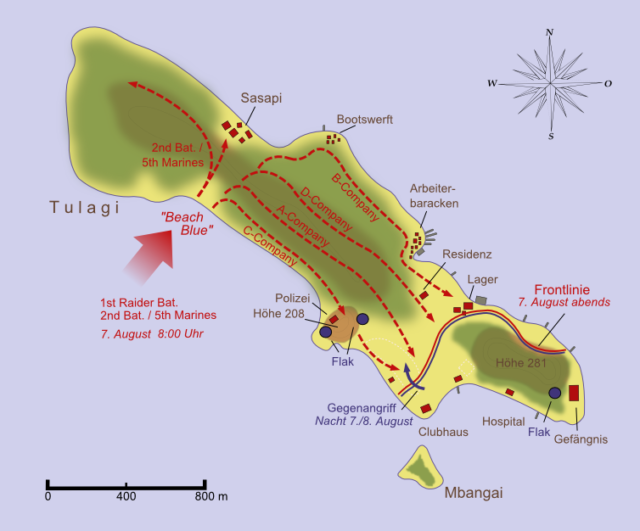
Ahrens was part of a security detachment guarding the Raiders’ right flank when the attack came. The fighting was so close that guns quickly became useless and it devolved into a melee of hand-to-hand combat.
It was Major Lewis William “Lew” Walt who found Ahrens the following morning. The 22-year-old private was slumped in a foxhole covered with blood; but that is not what amazed Walt.
With Ahrens were two Japanese bodies – one a lieutenant while the other was a sergeant. In Ahrens’ hand was a Japanese sword belonging to an officer. Around the foxhole were 11 more corpses; all Japanese.
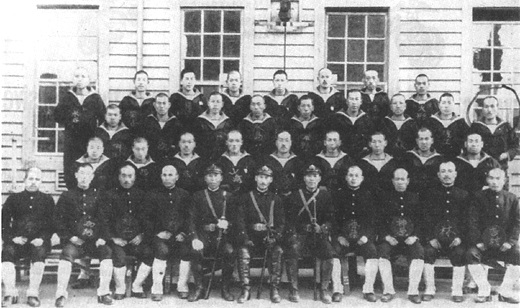
The Kentucky native had been stabbed and shot several times, but to Walt’s even greater surprise, Ahrens, who weighed a mere 140 pounds was still alive. Jumping in, Walt tried to do what he could, but he knew it was too late.
The major cradled Ahrens in his arms, pleading with him to lie still until help came, promising that everything would be alright. He knew it was a lie; there was far too much damage and blood loss.
With a final gasp, Ahrens whispered, “They tried to come over me last night – I guess they didn’t know I was a Marine.”
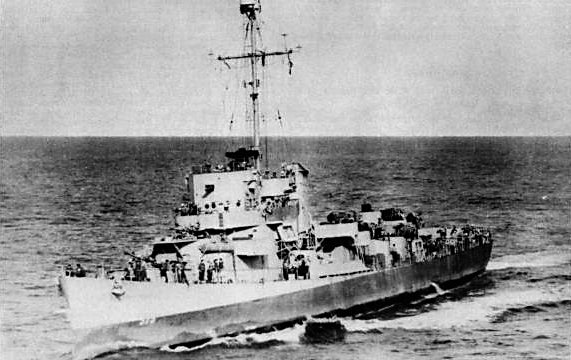
He was posthumously awarded the Navy Cross and credited with killing the officer in command of the attack, as well as two others. The following year, they also named a destroyer escort after him; the USS Ahrens (DE-575).
It would have made the private proud to know that on May 29, 1944, the USS Ahrens rescued 673 people from two ships sunk by German U-boats. She also protected merchant ships throughout the rest of the war, ensuring the flow of goods to where they were most needed.
Equally important, however, was the fact that the Guadalcanal Campaign was a success. It was also the turning point in the Pacific Theater, forcing Japan to go on the defensive.
